What we´re reading…
This month’s key articles were selected by Ryan Chadha, David Victor, and Young In Yoon.
ANESTHESIOLOGY AND CRITICAL CARE
Anesthesia and Analgesia
Factors Associated With Postreperfusion Syndrome in Living Donor Liver Transplantation: A Retrospective Study
Background: Postreperfusion syndrome (PRS) after portal vein reperfusion during liver transplantation (LT) has been reported to cause rapid hemodynamic changes and is associated with a prolonged postoperative hospital stay, renal failure, and increased mortality. Although there are some reports on risk factors for PRS in brain-dead donor LT, there are a few reports on those in living donor LT. Therefore, we retrospectively reviewed the factors associated with PRS to contribute to the anesthetic management so as to reduce PRS during living donor LT. Read more
Minerva Anestesiologica
Use of an intraoperative veno-venous bypass during liver transplantation: an observational, single center, cohort study.
Background: As previous studies demonstrated conflicting results, we investigated the hemodynamic and renal outcomes of the intra-operative use of a veno-venous bypass during liver transplantation. Read more
World Journal of Surgery
Intraoperative High Fraction of Inspiratory Oxygen is Independently Associated with Worse Outcome After Living-Donor Liver Transplantation: A Retrospective Study
Background: Ischemia and reperfusion injury is an important factor that determines graft function after liver transplantation, and oxygen plays a crucial role in this process. However, the relationship between the intraoperative high fraction of inspiratory oxygen (FiO2) and living-donor-liver-transplantation (LDLT) outcome remains unclear. Read more
HEPATOLOGY
Transplantation
Rising Trend in Waitlisting for Alcoholic Hepatitis With More Favorable Outcomes Than Other High Model for End-stage Liver Disease in the Current Era
Background: In the appropriate candidate, liver transplantation (LT) is a viable treatment for alcoholic hepatitis (AH). We compared the waitlisting trends and outcomes of AH patients in the context of others with high Model for End-stage Liver Disease (MELD) score. Read more
American Journal of Transplantation
Management of Cardiac Diseases in Liver Transplant Recipients: Comprehensive Review and Multidisciplinary Practice-Based Recommendations
Cardiac diseases are one of the most common causes of morbidity and mortality following liver transplantation (LT). Prior studies have shown that cardiac diseases affect close to one-third of liver transplant recipients (LTRs) long-term and that its incidence has been on the rise. This rise is expected to continue as more patients with advanced age and/or non-alcoholic steatohepatitis undergo LT. In view of the increasing disease burden, a multidisciplinary initiative was developed to critically review the existing literature (between 1/1/1990-3/17/2021) surrounding epidemiology, risk assessment, and risk mitigation of coronary heart disease, arrhythmia, heart failure, and valvular heart disease and formulate practice-based recommendations accordingly. Read more
Liver Transplantation
Operational tolerance is not always permanent: A 10-year prospective study in pediatric liver transplant recipients
Immunosuppression withdrawal can be safely performed in select liver transplant recipients, but the long-term outcomes and sustainability of tolerance have not been well-studied. We completed a 10-year prospective, observational study of 18 pediatric liver transplant recipients with operational tolerance to 1) assess the sustainability of tolerance over time; 2) compare the clinical characteristics of patients who maintained versus lost tolerance; 3) characterize liver histopathology findings in surveillance liver biopsies; and 4) describe immunologic markers in patients with tolerance. Read more
SURGERY
American Journal of Transplantation
Sequential hypothermic and normothermic machine perfusion enables safe transplantation of high-risk donor livers
Ex situ normothermic machine perfusion (NMP) is increasingly used for viability assessment of high-risk donor livers, whereas dual hypothermic oxygenated machine perfusion (DHOPE) reduces ischemia-reperfusion injury. We aimed to resuscitate and test the viability of initially-discarded, high-risk donor livers using sequential DHOPE and NMP with two different oxygen carriers: an artificial hemoglobin-based oxygen carrier (HBOC) or red blood cells (RBC). Read more
Transplantation
Varying Utilization Rates but Superior Outcomes in Liver Transplantation FromHepatitis C−positive Donors in the US: An Analysis of the OPTN/UNOS Database
Background: Liver transplantation (LT) from hepatitis C virus (HCV)−positive donors [antibody positive (Ab+) or nucleic acid test−positive (NAT+) donors] has been reported to achieve successful outcomes. However, donor and recipient selection has not been well-characterized. Read more
JAMA Surgery
Recipient and Donor Outcomes After Living-Donor Liver Transplant for Unresectable Colorectal Liver Metastases
Importance: Colorectal cancer is a leading cause of cancer-related death, and nearly 70% of patients with this cancer have unresectable colorectal cancer liver metastases (CRLMs). Compared with chemotherapy, liver transplant has been reported to improve survival in patients with CRLMs, but in North America, liver allograft shortages make the use of deceased-donor allografts for this indication problematic. Objective: To examine survival outcomes of living-donor liver transplant (LDLT) for unresectable, liver-confined CRLMs. Read more







